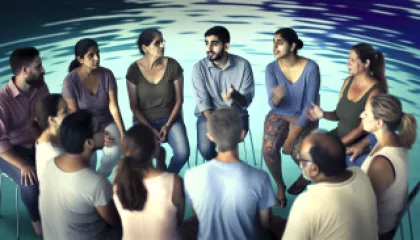Confronting Professional Bias: A Step-by-Step Guide
Introduction
In today's diverse and interconnected world, it is essential for professionals to confront their biases and ensure fair and equitable treatment of all individuals. Bias, whether conscious or unconscious, can hinder decision-making, limit opportunities, and perpetuate inequality. By actively confronting professional bias, individuals can create a more inclusive and supportive work environment.
Step 1: Understanding Bias
The first step in confronting professional bias is to develop an understanding of what bias is and how it manifests in different situations. Bias refers to the tendency to favor or discriminate against certain individuals or groups based on personal beliefs, stereotypes, or preconceived notions.
It is important to recognize that bias can be both explicit and implicit. Explicit bias is conscious and deliberate, while implicit bias is unconscious and often influenced by societal conditioning. Reflecting on our own biases and acknowledging their existence is crucial for personal growth and creating change.
Step 2: Self-Reflection
Self-reflection plays a key role in confronting professional bias. Take the time to examine your own beliefs, values, and assumptions about different groups of people. Ask yourself whether these beliefs are based on accurate information or if they are influenced by stereotypes or prejudices.
Consider the impact of your biases on your interactions with colleagues, clients, and stakeholders. Reflect on whether your biases have led to unfair treatment or missed opportunities for certain individuals. Honest self-reflection is essential for identifying areas where bias may be present and taking steps to address it.
Step 3: Educate Yourself
To effectively confront professional bias, it is necessary to educate yourself about different cultures, identities, and perspectives. Seek out resources such as books, articles, documentaries, and online courses that provide insights into the experiences of marginalized groups.
Engage in conversations with individuals who have different backgrounds and perspectives. Listen actively, ask questions, and strive to understand their experiences. This will help broaden your understanding and challenge any preconceived notions or stereotypes you may hold.
Step 4: Engage in Dialogue
Confronting professional bias requires open and honest communication. Engage in dialogue with colleagues, superiors, and subordinates about the importance of addressing bias in the workplace. Create a safe space where individuals can share their experiences and concerns without fear of judgment or retribution.
Encourage others to reflect on their own biases and listen attentively to their perspectives. Foster an environment of mutual respect and understanding, where everyone feels included and valued.
Step 5: Implement Bias-Reduction Strategies
Once you have gained awareness of your biases and engaged in meaningful dialogue, it is time to implement strategies to reduce bias in your professional life. These strategies can include:
- Unconscious Bias Training: Attend workshops or training sessions that focus on identifying and mitigating unconscious biases.
- Review Hiring Practices: Evaluate your organization's hiring practices to ensure they are fair and unbiased. Consider implementing blind resume reviews or structured interviews to minimize bias.
- Establish Diversity and Inclusion Initiatives: Advocate for diversity and inclusion initiatives within your organization. Encourage the recruitment and retention of individuals from underrepresented groups.
- Challenge Stereotypes: Actively challenge stereotypes and prejudices when you encounter them. Use your voice to promote fairness and equality.
- Hold Yourself Accountable: Regularly assess your own behavior and decisions to ensure they are free from bias. Seek feedback from colleagues and be open to constructive criticism.
Step 6: Continuous Learning and Improvement
Confronting professional bias is an ongoing process that requires continuous learning and improvement. Stay informed about current research, trends, and best practices in diversity and inclusion. Attend conferences, webinars, or seminars that focus on bias management and create opportunities for personal growth.
Engage in regular self-reflection and seek feedback from others to assess your progress. Celebrate your successes but also acknowledge areas where further growth is needed. Remember, confronting bias is a journey, and every step forward counts.
Conclusion
Confronting professional bias is a critical step towards creating a more inclusive and equitable work environment. By understanding bias, engaging in self-reflection, educating ourselves, fostering dialogue, implementing bias reduction strategies, and continuously learning and improving, we can overcome biases and contribute to a fairer and more just society.
Remember, bias reflection and management is not an easy task and requires dedication and commitment. However, the rewards of a bias-free workplace are immeasurable. Let us all strive towards a future where everyone is treated with dignity and respect, regardless of their background or identity.






